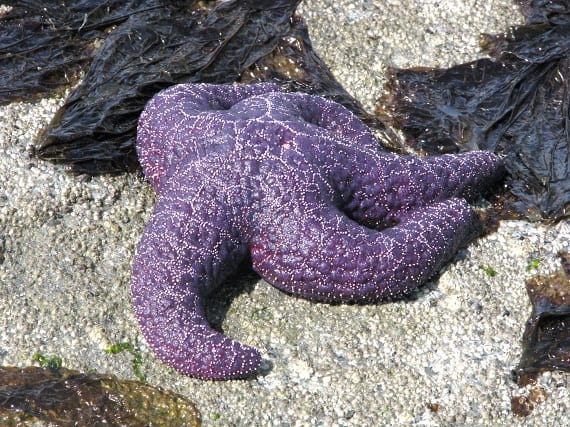- Details
- Written by: Death Blade
- Category: Hobbies
- Hits: 27512
If you have a great personality like mine to explore the wide range of oceans and tidal pools, I shall share with you the best places to visit.
1. If you want to find octopuses at the best spot, I recommend going California to a small empty island and search for tidal pools.
2. Whenever you go scuba diving in the ocean, always remember to be delicate with the sea creatures and wildlife.
3. Southern Californian tidal pool animals
4. Tidal pool creatures gallery

This is known as a gumboot chiton or "pac-man" of the sea.

This is a purple sea star.

These are a cluster of brittle stars.

This is a zebra worm

This is a sea lemon

This is a black sea hare.
All these creatures are some tidal pool creatures you can find at empty islands in california
Write comment (1 Comment)Subcategories
Gardening
Gardening is a wonderful hobby that involves cultivating and nurturing plants, flowers, vegetables, or even trees. It can be a fulfilling and relaxing activity that allows you to connect with nature and create a beautiful outdoor space. Whether you have a small balcony, a backyard, or access to a community garden, there are various ways to engage in gardening. Here are some key aspects and tips to consider:
-
Planning: Start by determining the type of garden you want. Consider factors like available space, sunlight exposure, soil quality, and your personal preferences. Decide whether you want to grow ornamental plants, vegetables, herbs, or a combination.
-
Site selection: Choose a location that receives adequate sunlight for the plants you wish to grow. Most plants require at least six hours of direct sunlight per day. Also, ensure easy access to water sources.
-
Soil preparation: Healthy soil is crucial for plant growth. Test your soil's pH level and composition to determine if any amendments are necessary. Add organic matter like compost or well-rotted manure to improve soil structure, fertility, and drainage.
-
Plant selection: Select plants suitable for your climate, taking into account factors like temperature, humidity, and frost dates. Consider the mature size of the plants and plan their placement accordingly. Choose disease-resistant varieties to minimize potential problems.
-
Watering: Provide adequate water to your plants based on their specific needs. Avoid overwatering or underwatering, as both can harm the plants. Mulching around plants can help retain moisture and suppress weeds.
-
Weeding: Regularly remove weeds to prevent them from competing with your plants for resources. Mulching can also help suppress weed growth.
-
Fertilizing: Depending on the type of plants you grow, they may require additional nutrients. Use organic fertilizers or compost to nourish the soil and promote healthy plant growth. Follow the recommended application rates and schedules.
-
Pest and disease control: Monitor your plants for signs of pests or diseases. Use organic pest control methods whenever possible, such as handpicking insects or using natural repellents. If necessary, consult local experts or use appropriate treatments to manage pests and diseases effectively.
-
Pruning and maintenance: Regularly prune your plants to promote healthy growth and maintain their shape. Remove dead or damaged parts, and ensure proper airflow between plants to prevent diseases.
-
Continuous learning: Gardening is a continuous learning process. Stay curious, experiment with new plants and techniques, and learn from both successes and failures. Join gardening communities or forums to exchange knowledge and experiences.
Remember, gardening should be enjoyable and tailored to your preferences. It's a creative outlet that allows you to express yourself while nurturing nature. Happy gardening!

